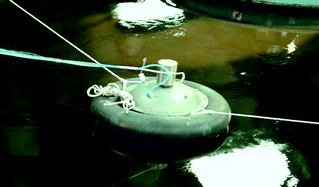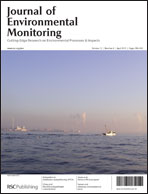Until recently, nearly all sewage treatment-related regulations and researches have focused on the removal of the conventional and toxic pollutants from liquid effluents. The discharge of toxic compounds to the atmosphere has been implicitly regarded as a way of removal or destruction. During sewage treatment, the fate mechanism of volatilization/stripping, sorption and biotransformation primarily determines the fate of volatile HAPs. The objectives of this study are to investigate the emission characteristics of HAPs, which are generated from the liquid surface of sewage treatment facilities, by using an emission isolation flux chamber. HAP emissions increased at the inlet of the aerobic chamber during summer due to the relatively high atmospheric temperature. The percent ratio of flux for toluene reached its peak in winter, accounting for 33.6–34.2% of the total, but decreased to 25.1–28.6% in summer. In autumn, trichloroethene (TCE) was the highest, recording 17.6–18.1%, with chloroform and toluene showing similar levels. It seems that the ratio of chlorinated hydrocarbons increases in both summer and autumn because the chamber temperature during that time is higher than winter. This study is the initial study to investigate the emission characteristics of volatile HAPs emitted from domestic sewage treatment facilities to the air in Korea. Therefore, the isolation flux chamber will be used as an emission estimations tool to measure HAPs from sewage treatment facilities and may be applied to develop the emission factor and national source inventory of HAPs.

You have access to this article
 Please wait while we load your content...
Something went wrong. Try again?
Please wait while we load your content...
Something went wrong. Try again?


 Please wait while we load your content...
Please wait while we load your content...